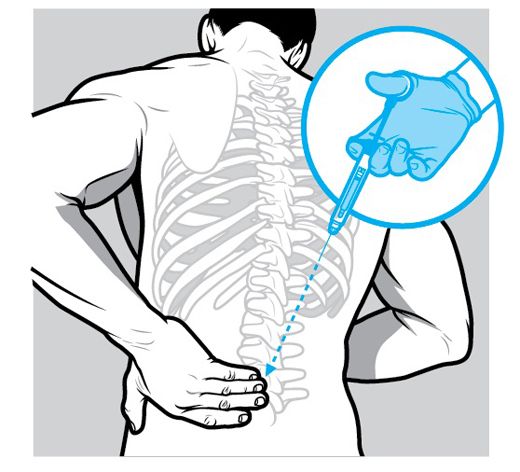Back pain is the leading cause of disability worldwide—and treating it can be a pain too.
But instead of offering back-pain sufferers the traditional options—painkillers or surgery—scientists have begun to realize the healing power of patients’ own stem cells in treating injured disks.
The latest state-of-the-art procedure is called multipotent mesenchymal stem cells.
How Multipotent Mesenchymal Stem Cells Work
Physicians can now remove stem cells from a person’s bone marrow or fat and then reinject them, in a concentrated form, into painful damaged spinal disks. This creates a pro-growth environment to help heal injured disk tissue.
“The idea is that you’re giving your own body more healing potential by using your own restorative stem cells and growth factors,” says Jeffrey Zeckser, M.D., a specialist in stem cell orthopedics based in Charlotte, North Carolina, who recently published a paper on the treatment.
Related: The Fit Man’s Back-Saving Workout
In one ongoing study involving 100 patients, 69 percent of those who received just one stem-cell injection experienced a 50 percent reduction in pain after a year. That’s nearly double the pain relief of those who received a placebo saline injection.
Related: The Bad Habit That Can Cause Ongoing Persistent Back Pain
Better yet, stem cell injection is minimally invasive, unlike traditional spine surgeries, which involve cutting, tissue removal, and scars, says Dr. Zeckser.
Recovery time is also shorter. While most back surgeries put you out of action for six to eight weeks, stem cell injection patients can return to light activity within days.
“The ideal treatment plan would include stem cells, followed by therapy exercises that emphasize core-strengthening and proper posture,” Dr. Zeckser says. “It all fits to create a healthy spine.”
There’s just one catch: The treatment is pricey. The cost is generally $6,000 to $10,000, and it’s not covered by insurance.
Where to Get It
More than a dozen clinical trials are under way. Ask your primary-care doctor to recommend a spine specialist who is qualified to perform the procedure.














